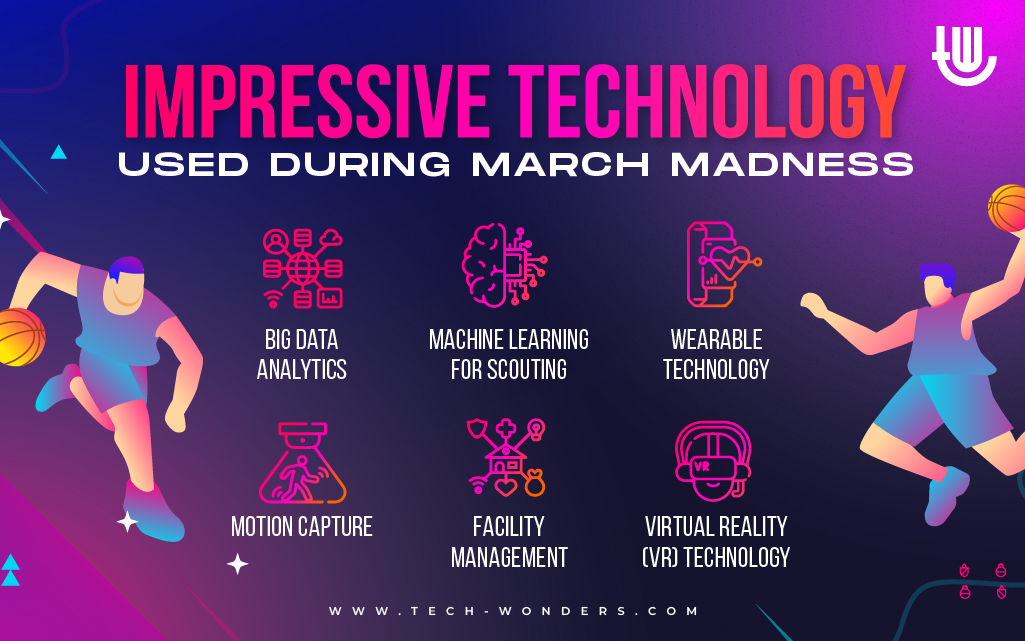
March Madness is an annual single-elimination men’s college basketball tournament in the United States, featuring 68 teams competing over three weeks. The National Collegiate Athletic Association (NCAA) organized the event, and it occurs in March and April, with the Final Four and Championship game held in early April.
Over time, technology integration has taken the March Madness games to impressive levels. Technological advancements are revolutionizing the well-loved sport, from enhancing the accuracy of referee’s calls to improving player performance and reducing injuries. Additionally, big data analytics and machine learning have helped teams make more informed decisions, which benefit players, coaches, and fans interested in March Madness bets.
Read on to discover the fascinating technology used for march madness games.
Big Data Analytics
With the help of advanced algorithms and statistical models, teams can analyze vast amounts of data, including game statistics and historical data, to gain insights into their performance and that of their opponents.
Teams use Big Data Analytics to identify patterns, trends, and correlations in the data that are not immediately apparent to the naked eye. It allows them to make more informed decisions about their game plans, adjust their strategies in real time, and gain a competitive advantage over their opponents.
For example, teams can use Big Data Analytics to analyze their opponents’ playing styles, strengths, and weaknesses and develop strategies to counteract them. They can also use this information to identify their areas of weakness, such as low shooting percentages or poor defensive play, and develop strategies to improve their performance in these areas.
Machine Learning for Scouting
Machine Learning is a powerful tool used in scouting to help teams analyze large amounts of data and identify patterns and trends that might not immediately appear to human scouts.
The algorithms analyze large amounts of game footage and identify patterns in how teams and individual players play. That includes the types of plays they run, how they move around the court, and the shots they tend to take. The information can be used to develop scouting reports and even find hidden gems that human eyes might easily overlook.
Wearable Technology
Wearable tech monitors player performance and health during and before march madness games. The devices include those for biometric data like smartwatches and fitness trackers, which are used to monitor heart rate, respiration, and body temperature.
In addition, they track players’ physical condition and identify potential health issues before they become serious.
Motion Capture
Motion capture technology uses cameras and sensors to track players’ movements on the court. By analyzing this data, coaches and medical staff can identify potential issues with players’ form or technique that might increase their risk of injury. They can then adjust training regimens or playing strategies that help to reduce the risk of injury.
Motion capture can also train referees and help them make more accurate calls during games. By analyzing player movements and tracking the ball, referees can be trained better to identify fouls, violations, and other rule infractions.
Facility Management
Technology is used to improve arena management through digital ticketing, payment systems, and crowd control. Digital ticketing enables fans to purchase tickets online and receive them electronically, which can be scanned at the arena entrance for easy entry.
That helps reduce lines at the games, but there’s even technology to control the crowd at March Madness games. That includes using sensors and cameras to monitor crowd movements and real-time data analysis to identify potential safety issues and make adjustments as needed.
VR Technology
Virtual Reality technology creates a simulated environment that allows fans to experience the game from different perspectives, such as courtside, behind the basket, or even from a player’s perspective. It gives fans an immersive and interactive experience that makes them feel like they are actually at the game.
VR technology also creates virtual arenas where fans can watch games in a simulated environment, with crowd noise and other game-related sounds.
As technology evolves, we can expect even more innovations to enhance basketball and the March Madness tournament further.